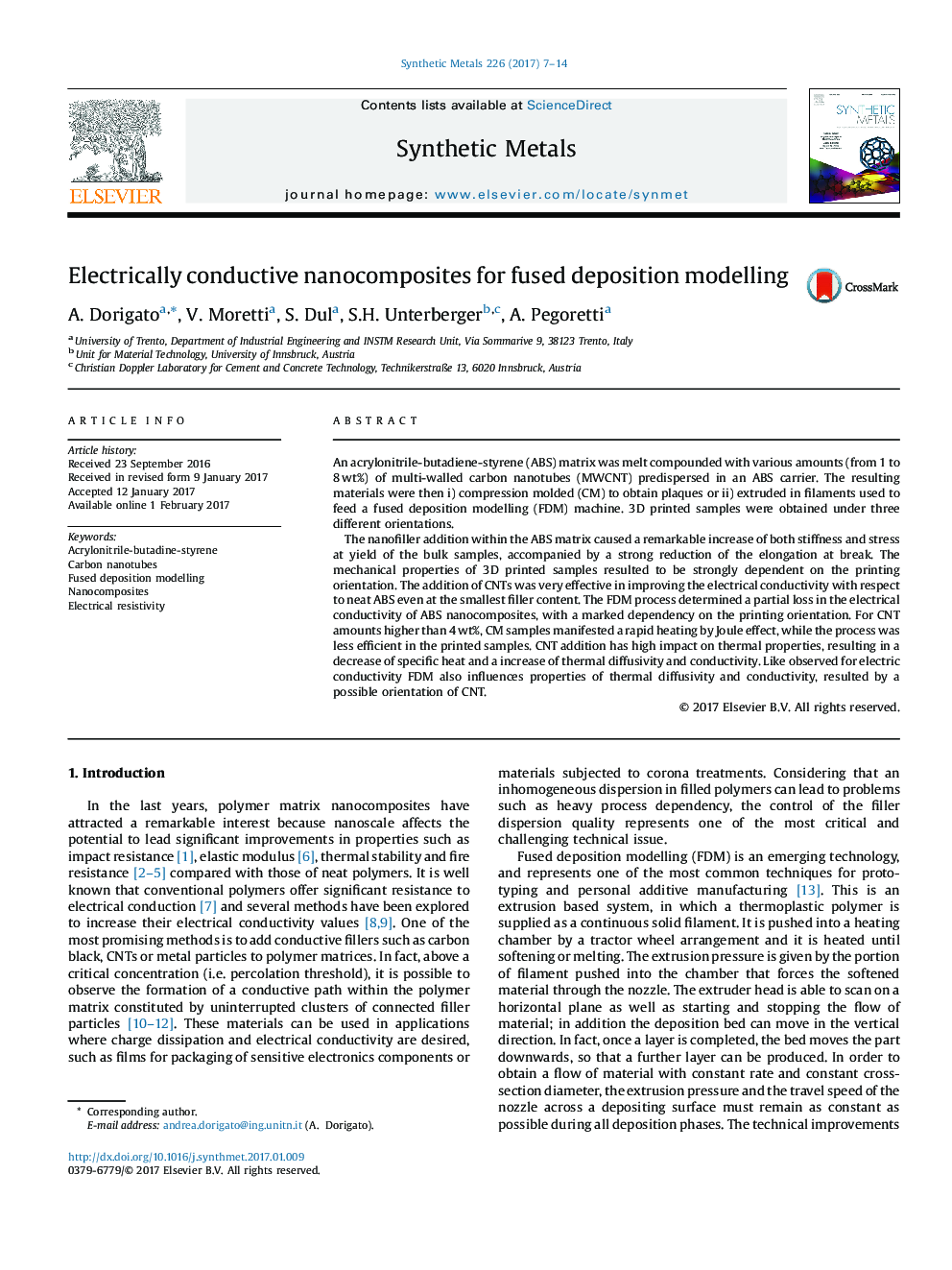| Article ID | Journal | Published Year | Pages | File Type |
|---|---|---|---|---|
| 5435470 | Synthetic Metals | 2017 | 8 Pages |
â¢3D printed ABS nanocomposites with multi-walled carbon nanotubes are investigated.â¢The mechanical properties of 3D printed samples depend on the printing orientation.â¢The FDM process leads affects the electrical conductivity of ABS nanocomposites.â¢CNT addition has high impact on thermal properties of the prepared samples.
An acrylonitrile-butadiene-styrene (ABS) matrix was melt compounded with various amounts (from 1 to 8Â wt%) of multi-walled carbon nanotubes (MWCNT) predispersed in an ABS carrier. The resulting materials were then i) compression molded (CM) to obtain plaques or ii) extruded in filaments used to feed a fused deposition modelling (FDM) machine. 3D printed samples were obtained under three different orientations.The nanofiller addition within the ABS matrix caused a remarkable increase of both stiffness and stress at yield of the bulk samples, accompanied by a strong reduction of the elongation at break. The mechanical properties of 3D printed samples resulted to be strongly dependent on the printing orientation. The addition of CNTs was very effective in improving the electrical conductivity with respect to neat ABS even at the smallest filler content. The FDM process determined a partial loss in the electrical conductivity of ABS nanocomposites, with a marked dependency on the printing orientation. For CNT amounts higher than 4Â wt%, CM samples manifested a rapid heating by Joule effect, while the process was less efficient in the printed samples. CNT addition has high impact on thermal properties, resulting in a decrease of specific heat and a increase of thermal diffusivity and conductivity. Like observed for electric conductivity FDM also influences properties of thermal diffusivity and conductivity, resulted by a possible orientation of CNT.
